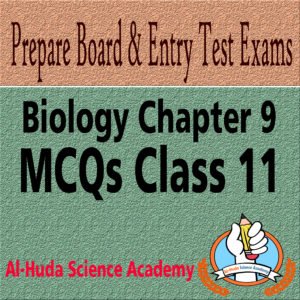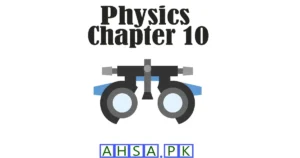Al-Huda Science Academy is focusing not only on short questions and long questions but also on Biology Chapter 11 MCQs Class 11. Entry Tests required a lot of effort on Multiple Choice Questions that should be of conceptual in nature. The users can participate without login to MCQs test. All MCQs are taken from the past papers of Punjab Boards. Chapter 11 of F.Sc Part 1 Biology is based on Bioenergetics.
Biology Chapter 11 includes
- Conversion of solar energy into chemical energy
- Chloroplasts – The sites of photosynthesis in plants
- Photosynthetic pigments
- Light – the driving energy
- Role of carbon dioxide – A photosynthetic reactant
- Reactions of photosynthesis
- Respiration
Biology Chapter 11 MCQs Class 11
Results
#1. The breakdown of terminal phosphate of ATP releases energy about:
#2. Chlorophyll is found in all photosynthetic organisms except:
#3. Chlorophyll absorbs mainly wavelengths of:
#4. Quantitative study of energy relationship in biological system is called:
#5. Impotant source of atmospheric oxygen, released during photosynthesis is from:
#6. In mitochondria, the pumping of proton (chemiosmosis) is across the:
#7. Light wavelength least absorbed by chlorophylls is:
#8. A kind of chemical link between anabolism and catabolism:
#9. The maximum absorption peaks of length are:
#10. The process by which pH gradient across membrane drives of formation of ATP is called:
#11. The percentage of photosynthesis carried out by terrestrial plants is about:
#12. The first action spectrum was obtained by biologist T.W Engelmann in:
#13. In yeast, the products of anaerobic respiration are:
#14. Enzymes involved in cellular respiration are found in:
#15. Magnesium of chlorophyll is replaced in haemoglobin by:
#16. Energy poor inorganic oxidized compounds are reduced to energy rich carbohydrates during:
#17. Glycolysis is the breakdown of glucose up to the formation of:
#18. Thylakoid membranes involved in ATP synthesis by a process known as:
#19. The hypothesis that plants split water as a source of hydrogen was given by:
#20. One of the accessory photosynthetic pigments carotenes are mostly:
#21. Glyycolysis is the breakdown of:
#22. The only photosynthesizing cells of epidermis of leaf are:
#23. The carotene are mostly red to:
#24. Accessory photosynthetic pigments xanthophylls are:
#25. Molecular formula of chlorophyll ‘b’ is:
#26. Chlorophyll molecule contains except:
#27. Photosynthetic pigments are the substances that absorb visible light having wave length:
#28. The area of leaf surface covered by stomate is only:
#29. Chlorophylls are inslouble in:
#30. Haem portion of haemoglobin is same to porphyrin ring with a difference of:
#31. The water splitting up of photosynthesis that releases oxygen is called:
#32. The breaking of terminal phosphate of ATP release about 7.3 kcals of:
#33. Photosynthetic pigments organized into clusters are called:
#34. During respiratory chain coenzyme Q is oxidized by:
#35. The final product of glycolysis is:
#36. The first action spectrum was obtained by:
#37. Conversion of one pyruvic acid into one acetyl Co-A gives off one molecule of:
#38. Corbon dioxide enters the leaves through:
#39. Daily rhythmic opening and closing of stomata is:
#40. Absorption of light is maximum at :
#41. A great deal of energy is released during:
#42. Which one is not the phase of calvin cycle:
#43. A graph plotting absorption of light of different wavelengths by a pigment is called:
#44. The dark reaction of photosynthesis occurs in:
#45. In the first step of citric acid cycle acetyle-Co-A reacts oxaloacetate to form:
#46. All life on planet earth is powered by:
#47. Formula of lactic acid is:
#48. The amount of energy present within the chemical bonds of glucose is converted into ATP during Anaerobic respiration is:
#49. Pyruvic acid is produced as a result of:
#50. In respiratory chain, NADH is oxidized by:
#51. The electron transport chain system play role in generation of ATP by:
#52. Photosystem 2 has the form of chlorophyll a which absorbs best light of:
More MCQs for Class 11
You can comment below or Contact Us anytime about your queries.
Ahsa.pk has also launched question area where you can Ask Any Question related to any field of your interest.








